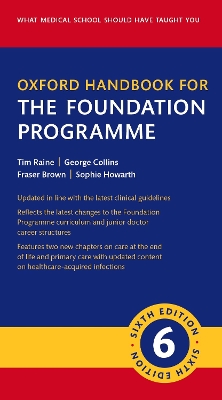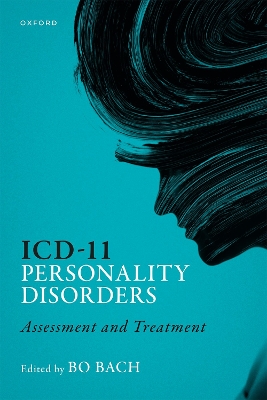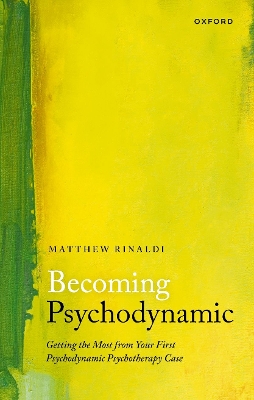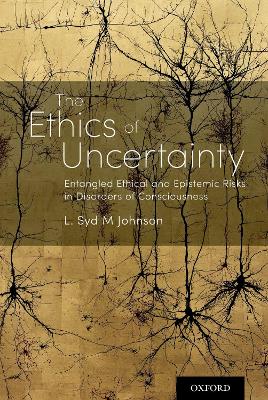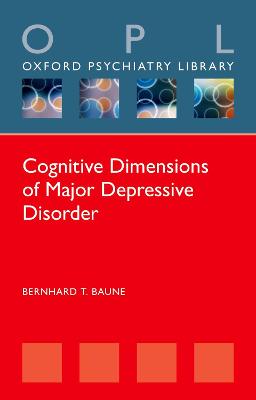When Brains Meet Buildings
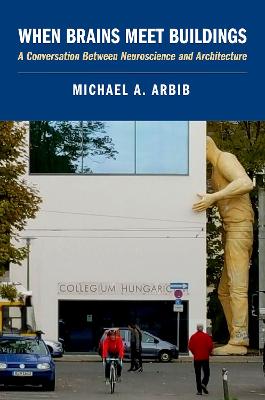 -10%
portes grátis
-10%
portes grátis
When Brains Meet Buildings
Arbib, Michael A.
Oxford University Press Inc
10/2021
696
Dura
Inglês
9780190060954
15 a 20 dias
1286
Descrição não disponível.
Preface
Acknowledgments
Chapter 1. Brains in Bodies in the - Social, Built and Natural - Environment
1.1. Linking Physical and Mental and Construction
1.2. Framing the AN Conversation
1.3. How Brains Meet Buildings
1.4 The Many Levels of the Brain
1.5. A Key Debate: Is Neuroscience Relevant to Architecture?
Chapter 2. An Action-Oriented Perspective on Space and Affordances
2.1. In an Art Gallery: From Wayfinding to Contemplation
2.2. Affordances and Effectivities
2.3. The Thinking Hand
2.4. The Thinking Hand and Its Schemas
2.5. Schemas: Up to Society; Down to Neurons
2.6. The Thinking Hand and Its Brain
2.7. Design in Architecture and in Brain Modeling
Chapter 3. A Look at Vision, and a Touch More
3.1. Engineering and Architectural Aesthetics
3.2. Neural Circuits for Vision
3.3. Learning and Memory
3.4. VISIONS: Scene Perception as a Form of Construction
3.5. Aesthetic Judgement of Visual Form
3.6. Schemas Within and Beyond Vision
Chapter 4. Atmosphere, Affordances, and Emotion
4.1. Atmosphere Exemplified
4.2. Motivation, Emotion, and Brains
4.3. Atmosphere as a Non-Gibsonian Affordance
4.4. The Evocation of Atmosphere in Paintings
4.5. Seeking Neural Correlates of Environments Inducing Contemplative States
4.6. Experiences of Ultimacy
Chapter 5. From Empathy to Mirror Neurons and Back to Aesthetics
5.1. Empathy and Einfuehlung in Life, Architecture and Art
5.2. Mirror Neurons and Their Larger Setting
5.3. How Neural Nets Enable Us to Learn and Remember
5.4. Modeling How Mirror Neurons Learn and Function
5.5. Empathy and the Brain
5.6. Einfuehlung and the Motor Component of Contemplation
5.7. Neuroaesthetics Revisited, and More
Chapter 6. From Libraries to Wayfinding, Waylosing, and Symbolism
6.1. Libraries
6.2. A Cognitive Account of Wayfinding
6.3. It Takes More Than a Hippocampus to Build a Cognitive Map
6.4. Symbolism and Symbols
Chapter 7. When Buildings Have "Brains"
7.1. Machines for Living In, Revisited
7.2. Can Architecture Be Smart, Can Intelligence Be Artificial?
7.3. The Interactive Space Ada
7.4. Neuromorphic Architecture: Neural and Physical Spaces for Buildings
7.5. Community & Biophilia
7.6. Where Might Neuromorphic Architecture Lead Us?
Chapter 8. Evolving the Architecture-Ready Brain
8.1. Introducing the X-Ready Brain
8.2. From Mirror Systems to Complex Imitation, Pantomime and Pedagogy
8.3. From Pantomime to Protolanguages and On to Languages
8.4. The Language-Ready Brain is Also Construction-Ready and Drawing-Ready
8.5. The Neuropsychology of Drawing
8.6. Is Architecture a Language for the Architecture-Ready Brain?
Chapter 9. Experience and Design: Case Studies
9.1. Imagination and Design: Our Initial Framework
9.2. Jorn Utzon's Experience and Design: The Sydney Opera House
9.3. Sketching and Model-Making: Frank Gehry's Bilbao Guggenheim
Chapter 10. Experience and Design: Bringing in the Brain
10.1. Towards IBSEN: Modeling Imagination in Brain Systems for Episodes and Navigation
10.2. Multi-Modal Perception Within the Action-Perception Cycle
10.3. Linking Memory and Imagination: The Hippocampus and More
10.4. From Scripts to Cognitive Maps to Buildings
10.5. And So We Come to the End Which is a Beginning
About the Author
Acknowledgments
Chapter 1. Brains in Bodies in the - Social, Built and Natural - Environment
1.1. Linking Physical and Mental and Construction
1.2. Framing the AN Conversation
1.3. How Brains Meet Buildings
1.4 The Many Levels of the Brain
1.5. A Key Debate: Is Neuroscience Relevant to Architecture?
Chapter 2. An Action-Oriented Perspective on Space and Affordances
2.1. In an Art Gallery: From Wayfinding to Contemplation
2.2. Affordances and Effectivities
2.3. The Thinking Hand
2.4. The Thinking Hand and Its Schemas
2.5. Schemas: Up to Society; Down to Neurons
2.6. The Thinking Hand and Its Brain
2.7. Design in Architecture and in Brain Modeling
Chapter 3. A Look at Vision, and a Touch More
3.1. Engineering and Architectural Aesthetics
3.2. Neural Circuits for Vision
3.3. Learning and Memory
3.4. VISIONS: Scene Perception as a Form of Construction
3.5. Aesthetic Judgement of Visual Form
3.6. Schemas Within and Beyond Vision
Chapter 4. Atmosphere, Affordances, and Emotion
4.1. Atmosphere Exemplified
4.2. Motivation, Emotion, and Brains
4.3. Atmosphere as a Non-Gibsonian Affordance
4.4. The Evocation of Atmosphere in Paintings
4.5. Seeking Neural Correlates of Environments Inducing Contemplative States
4.6. Experiences of Ultimacy
Chapter 5. From Empathy to Mirror Neurons and Back to Aesthetics
5.1. Empathy and Einfuehlung in Life, Architecture and Art
5.2. Mirror Neurons and Their Larger Setting
5.3. How Neural Nets Enable Us to Learn and Remember
5.4. Modeling How Mirror Neurons Learn and Function
5.5. Empathy and the Brain
5.6. Einfuehlung and the Motor Component of Contemplation
5.7. Neuroaesthetics Revisited, and More
Chapter 6. From Libraries to Wayfinding, Waylosing, and Symbolism
6.1. Libraries
6.2. A Cognitive Account of Wayfinding
6.3. It Takes More Than a Hippocampus to Build a Cognitive Map
6.4. Symbolism and Symbols
Chapter 7. When Buildings Have "Brains"
7.1. Machines for Living In, Revisited
7.2. Can Architecture Be Smart, Can Intelligence Be Artificial?
7.3. The Interactive Space Ada
7.4. Neuromorphic Architecture: Neural and Physical Spaces for Buildings
7.5. Community & Biophilia
7.6. Where Might Neuromorphic Architecture Lead Us?
Chapter 8. Evolving the Architecture-Ready Brain
8.1. Introducing the X-Ready Brain
8.2. From Mirror Systems to Complex Imitation, Pantomime and Pedagogy
8.3. From Pantomime to Protolanguages and On to Languages
8.4. The Language-Ready Brain is Also Construction-Ready and Drawing-Ready
8.5. The Neuropsychology of Drawing
8.6. Is Architecture a Language for the Architecture-Ready Brain?
Chapter 9. Experience and Design: Case Studies
9.1. Imagination and Design: Our Initial Framework
9.2. Jorn Utzon's Experience and Design: The Sydney Opera House
9.3. Sketching and Model-Making: Frank Gehry's Bilbao Guggenheim
Chapter 10. Experience and Design: Bringing in the Brain
10.1. Towards IBSEN: Modeling Imagination in Brain Systems for Episodes and Navigation
10.2. Multi-Modal Perception Within the Action-Perception Cycle
10.3. Linking Memory and Imagination: The Hippocampus and More
10.4. From Scripts to Cognitive Maps to Buildings
10.5. And So We Come to the End Which is a Beginning
About the Author
Este título pertence ao(s) assunto(s) indicados(s). Para ver outros títulos clique no assunto desejado.
Preface
Acknowledgments
Chapter 1. Brains in Bodies in the - Social, Built and Natural - Environment
1.1. Linking Physical and Mental and Construction
1.2. Framing the AN Conversation
1.3. How Brains Meet Buildings
1.4 The Many Levels of the Brain
1.5. A Key Debate: Is Neuroscience Relevant to Architecture?
Chapter 2. An Action-Oriented Perspective on Space and Affordances
2.1. In an Art Gallery: From Wayfinding to Contemplation
2.2. Affordances and Effectivities
2.3. The Thinking Hand
2.4. The Thinking Hand and Its Schemas
2.5. Schemas: Up to Society; Down to Neurons
2.6. The Thinking Hand and Its Brain
2.7. Design in Architecture and in Brain Modeling
Chapter 3. A Look at Vision, and a Touch More
3.1. Engineering and Architectural Aesthetics
3.2. Neural Circuits for Vision
3.3. Learning and Memory
3.4. VISIONS: Scene Perception as a Form of Construction
3.5. Aesthetic Judgement of Visual Form
3.6. Schemas Within and Beyond Vision
Chapter 4. Atmosphere, Affordances, and Emotion
4.1. Atmosphere Exemplified
4.2. Motivation, Emotion, and Brains
4.3. Atmosphere as a Non-Gibsonian Affordance
4.4. The Evocation of Atmosphere in Paintings
4.5. Seeking Neural Correlates of Environments Inducing Contemplative States
4.6. Experiences of Ultimacy
Chapter 5. From Empathy to Mirror Neurons and Back to Aesthetics
5.1. Empathy and Einfuehlung in Life, Architecture and Art
5.2. Mirror Neurons and Their Larger Setting
5.3. How Neural Nets Enable Us to Learn and Remember
5.4. Modeling How Mirror Neurons Learn and Function
5.5. Empathy and the Brain
5.6. Einfuehlung and the Motor Component of Contemplation
5.7. Neuroaesthetics Revisited, and More
Chapter 6. From Libraries to Wayfinding, Waylosing, and Symbolism
6.1. Libraries
6.2. A Cognitive Account of Wayfinding
6.3. It Takes More Than a Hippocampus to Build a Cognitive Map
6.4. Symbolism and Symbols
Chapter 7. When Buildings Have "Brains"
7.1. Machines for Living In, Revisited
7.2. Can Architecture Be Smart, Can Intelligence Be Artificial?
7.3. The Interactive Space Ada
7.4. Neuromorphic Architecture: Neural and Physical Spaces for Buildings
7.5. Community & Biophilia
7.6. Where Might Neuromorphic Architecture Lead Us?
Chapter 8. Evolving the Architecture-Ready Brain
8.1. Introducing the X-Ready Brain
8.2. From Mirror Systems to Complex Imitation, Pantomime and Pedagogy
8.3. From Pantomime to Protolanguages and On to Languages
8.4. The Language-Ready Brain is Also Construction-Ready and Drawing-Ready
8.5. The Neuropsychology of Drawing
8.6. Is Architecture a Language for the Architecture-Ready Brain?
Chapter 9. Experience and Design: Case Studies
9.1. Imagination and Design: Our Initial Framework
9.2. Jorn Utzon's Experience and Design: The Sydney Opera House
9.3. Sketching and Model-Making: Frank Gehry's Bilbao Guggenheim
Chapter 10. Experience and Design: Bringing in the Brain
10.1. Towards IBSEN: Modeling Imagination in Brain Systems for Episodes and Navigation
10.2. Multi-Modal Perception Within the Action-Perception Cycle
10.3. Linking Memory and Imagination: The Hippocampus and More
10.4. From Scripts to Cognitive Maps to Buildings
10.5. And So We Come to the End Which is a Beginning
About the Author
Acknowledgments
Chapter 1. Brains in Bodies in the - Social, Built and Natural - Environment
1.1. Linking Physical and Mental and Construction
1.2. Framing the AN Conversation
1.3. How Brains Meet Buildings
1.4 The Many Levels of the Brain
1.5. A Key Debate: Is Neuroscience Relevant to Architecture?
Chapter 2. An Action-Oriented Perspective on Space and Affordances
2.1. In an Art Gallery: From Wayfinding to Contemplation
2.2. Affordances and Effectivities
2.3. The Thinking Hand
2.4. The Thinking Hand and Its Schemas
2.5. Schemas: Up to Society; Down to Neurons
2.6. The Thinking Hand and Its Brain
2.7. Design in Architecture and in Brain Modeling
Chapter 3. A Look at Vision, and a Touch More
3.1. Engineering and Architectural Aesthetics
3.2. Neural Circuits for Vision
3.3. Learning and Memory
3.4. VISIONS: Scene Perception as a Form of Construction
3.5. Aesthetic Judgement of Visual Form
3.6. Schemas Within and Beyond Vision
Chapter 4. Atmosphere, Affordances, and Emotion
4.1. Atmosphere Exemplified
4.2. Motivation, Emotion, and Brains
4.3. Atmosphere as a Non-Gibsonian Affordance
4.4. The Evocation of Atmosphere in Paintings
4.5. Seeking Neural Correlates of Environments Inducing Contemplative States
4.6. Experiences of Ultimacy
Chapter 5. From Empathy to Mirror Neurons and Back to Aesthetics
5.1. Empathy and Einfuehlung in Life, Architecture and Art
5.2. Mirror Neurons and Their Larger Setting
5.3. How Neural Nets Enable Us to Learn and Remember
5.4. Modeling How Mirror Neurons Learn and Function
5.5. Empathy and the Brain
5.6. Einfuehlung and the Motor Component of Contemplation
5.7. Neuroaesthetics Revisited, and More
Chapter 6. From Libraries to Wayfinding, Waylosing, and Symbolism
6.1. Libraries
6.2. A Cognitive Account of Wayfinding
6.3. It Takes More Than a Hippocampus to Build a Cognitive Map
6.4. Symbolism and Symbols
Chapter 7. When Buildings Have "Brains"
7.1. Machines for Living In, Revisited
7.2. Can Architecture Be Smart, Can Intelligence Be Artificial?
7.3. The Interactive Space Ada
7.4. Neuromorphic Architecture: Neural and Physical Spaces for Buildings
7.5. Community & Biophilia
7.6. Where Might Neuromorphic Architecture Lead Us?
Chapter 8. Evolving the Architecture-Ready Brain
8.1. Introducing the X-Ready Brain
8.2. From Mirror Systems to Complex Imitation, Pantomime and Pedagogy
8.3. From Pantomime to Protolanguages and On to Languages
8.4. The Language-Ready Brain is Also Construction-Ready and Drawing-Ready
8.5. The Neuropsychology of Drawing
8.6. Is Architecture a Language for the Architecture-Ready Brain?
Chapter 9. Experience and Design: Case Studies
9.1. Imagination and Design: Our Initial Framework
9.2. Jorn Utzon's Experience and Design: The Sydney Opera House
9.3. Sketching and Model-Making: Frank Gehry's Bilbao Guggenheim
Chapter 10. Experience and Design: Bringing in the Brain
10.1. Towards IBSEN: Modeling Imagination in Brain Systems for Episodes and Navigation
10.2. Multi-Modal Perception Within the Action-Perception Cycle
10.3. Linking Memory and Imagination: The Hippocampus and More
10.4. From Scripts to Cognitive Maps to Buildings
10.5. And So We Come to the End Which is a Beginning
About the Author
Este título pertence ao(s) assunto(s) indicados(s). Para ver outros títulos clique no assunto desejado.

